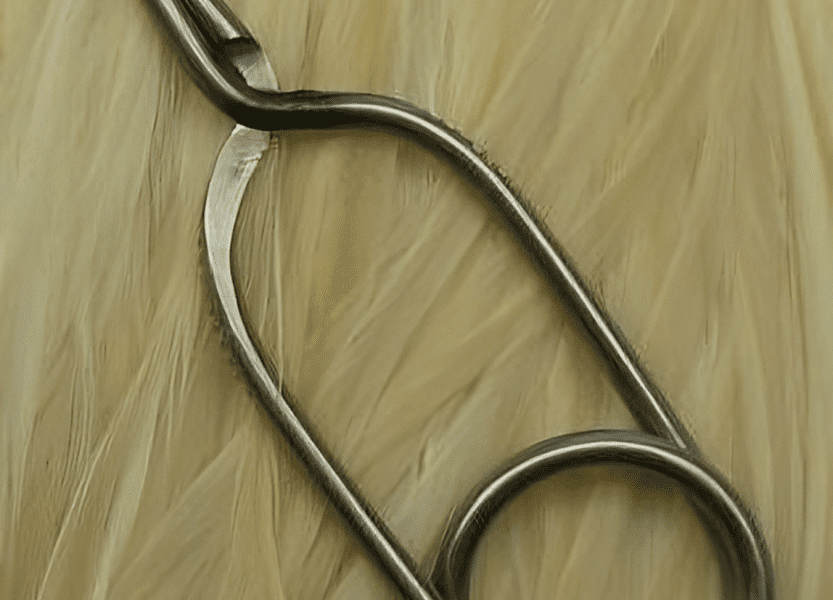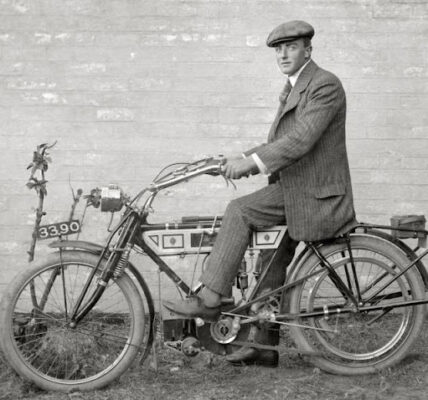In the world of fly tying, every tool has a purpose, but few are as essential as hackle pliers. Though simple in design, these small tools play a significant role in creating flies that are not only functional but also visually appealing. Whether you’re a seasoned fly tyer or just getting started, hackle pliers can elevate your tying skills by giving you precise control over delicate materials. In this article, we’ll explore the various uses of hackle pliers, the different types available, and why they should be an essential part of your fly tying toolkit.
The Importance of Hackle Pliers in Fly Tying
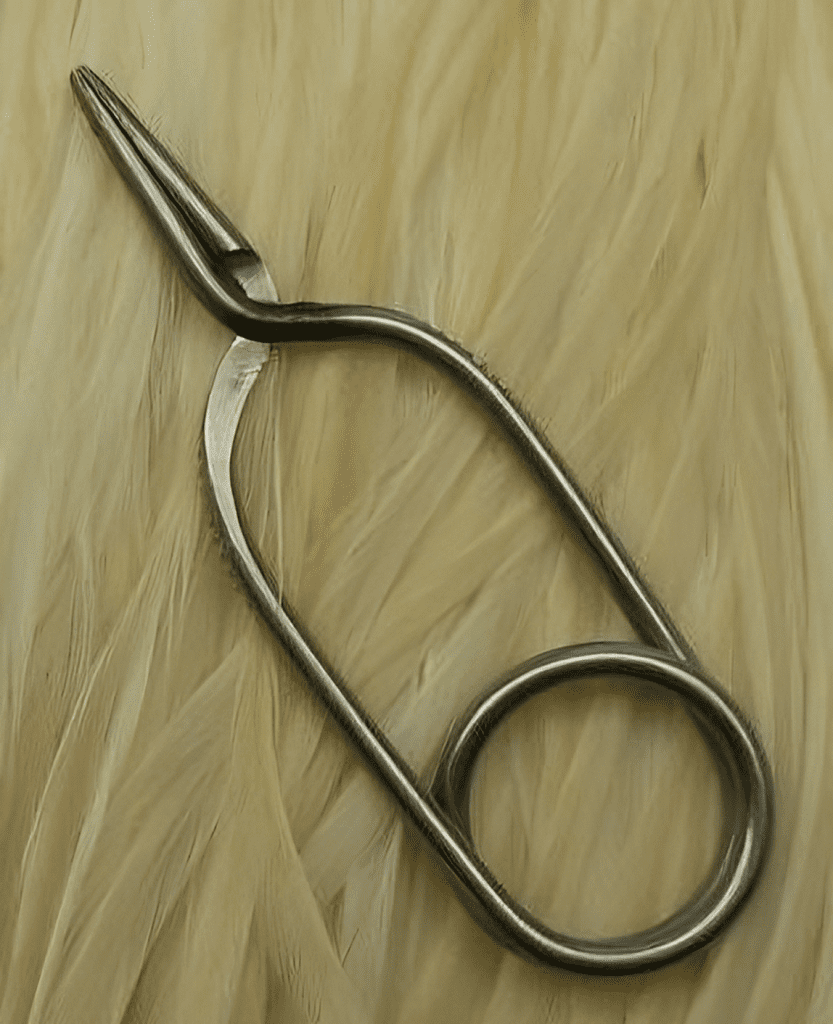
At their core, hackle pliers are designed to handle and wrap hackles—the feathers that give flies their distinctive look, movement, and appeal. However, these tools do much more than hold feathers. They act as a third hand, allowing you to secure small, slippery materials with ease. This control is crucial, as it lets you handle delicate materials with precision and helps avoid any unnecessary breaks or slips that can ruin your work.
Hackle pliers provide:
- Enhanced Control: The grip of the pliers allows for a precise feather wrap, ensuring even spacing and a clean look.
- Improved Handling of Fragile Materials: For delicate materials like pheasant or partridge feathers, hackle pliers provide the necessary tension without the risk of breaking.
- Hands-Free Assistance: Sometimes, the weight of the pliers keeps the feather taut, allowing you to leave it in place while working on other parts of the fly.
Using Hackle Pliers for More Than Just Feathers
While hackle pliers are primarily used to handle feathers, they’re also versatile enough for other materials. From tinsel to quills and yarn, these pliers can hold a range of materials, making them an indispensable tool in any fly tyer’s arsenal.
- Maintaining Tension: For materials like tinsel, yarn, or dubbing, the pliers can help maintain even tension, which is essential for achieving a smooth, polished look.
- Reducing Hand Fatigue: Small or slippery materials often require a tighter grip, which can be hard on the fingers. Hackle pliers eliminate this strain, allowing you to work comfortably for longer.
- Handling Delicate Elements: For fragile materials prone to fraying or snapping, hackle pliers offer a gentle grip that reduces the risk of damage.
The Simple Yet Effective Design of Hackle Pliers

The design of hackle pliers is straightforward, yet remarkably effective. Most pliers feature spring-loaded jaws that open and close with a gentle squeeze. This setup allows you to grip materials tightly without crushing them, which is essential for keeping feathers and other delicate materials intact.
- Basic Clamp Style: Often called “English-style” hackle pliers, this design consists of a single piece of metal that’s bent into a spring shape. It’s a budget-friendly option that gets the job done.
- Padded or Rubberized Jaws: Some hackle pliers come with soft jaws to prevent damage to delicate feathers or threads. The padding provides a secure grip without the risk of cutting or crushing the material.
- User-Friendly Grip: Quality hackle pliers open smoothly, close securely, and are designed to be comfortable during prolonged use.
Qualities to Look for in High-Quality Hackle Pliers
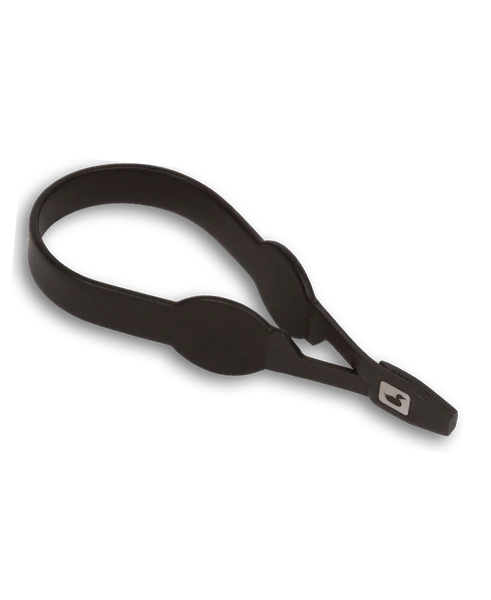
When choosing hackle pliers, it’s essential to look for a set that’s easy to use and provides a secure grip. Here are some characteristics to consider when selecting hackle pliers:
- Smooth Operation: The best hackle pliers should open and close without any jarring or sticking, allowing for easy manipulation of materials.
- Firm Grip: Look for pliers that hold materials tightly enough to maintain tension but not so tight that they damage delicate feathers.
- Soft Jaws: Avoid pliers with sharp edges. Models with rubberized or padded jaws offer better protection for your materials.
- Lightweight Design: A lightweight pair of hackle pliers is easier to handle and can help you work more comfortably, especially during extended tying sessions.
Exploring Different Types of Hackle Pliers
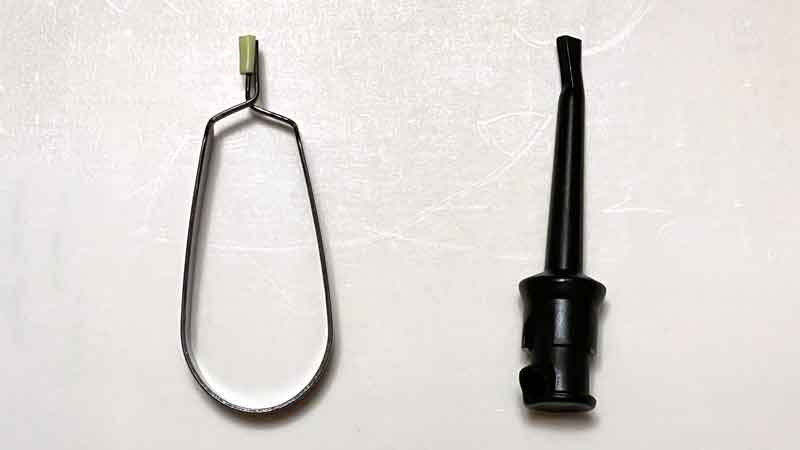
Hackle pliers come in a variety of designs, each with unique advantages. Choosing the right type of hackle pliers can make a big difference in your fly tying experience. Here are a few popular options:
1. Basic Clamp Style (English Style)
This traditional design is the go-to for beginners. It consists of a simple loop and a pair of spring-loaded jaws. The loop allows for easy wrapping, making it ideal for tyers who are still mastering the craft.
2. Plate-Style Hackle Pliers
Made from flat metal plates, these pliers offer a wider grip and are often easier to handle, especially for those with larger hands. The plate design provides a more comfortable grip, which is ideal for extended tying sessions.
3. Tweezer-Style or Nabber Pliers
Resembling a pair of tweezers, this style is excellent for grabbing small or delicate materials. Often equipped with a finger ring for added grip, nabber pliers are perfect for intricate work where precise control is essential.
4. Drop-Shaped Hackle Pliers
With a unique drop shape, these pliers open when you press the back end, offering a different grip style. The ergonomic design may feel more comfortable for some tyers, providing a solid alternative to the more traditional styles.
5. Ring and Shaft Variants
These pliers include a ring or shaft that offers added control, allowing for single-finger operation. Ideal for tyers who prefer a lightweight tool, this design makes handling fine materials a breeze.
6. Hook and Tube Design
The hook and tube design is more advanced and provides excellent control. The hook holds the material securely, while a tube slides over it to keep it in place. This intricate design is ideal for tyers who work with a variety of materials and want precision in their wraps.
Do You Really Need Hackle Pliers?
Some experienced fly tyers might argue that hackle pliers aren’t essential, especially for larger feathers or tougher materials. However, for smaller or more delicate elements, hackle pliers provide the control and precision that can make all the difference. Whether you’re just starting out or are a seasoned pro, hackle pliers can simplify your work and help you achieve professional-quality results.
Conclusion: A Small Tool with a Big Impact
Hackle pliers might seem like a humble tool, but they offer invaluable assistance for fly tying. By providing control, precision, and a gentle grip on delicate materials, hackle pliers help you create cleaner, more polished flies. From the classic English style to more intricate designs, these tools are available in various types to suit every fly tyer’s needs. So, the next time you sit down to tie a fly, reach for your hackle pliers, and discover how they can enhance your craft, making each session more enjoyable and productive.
